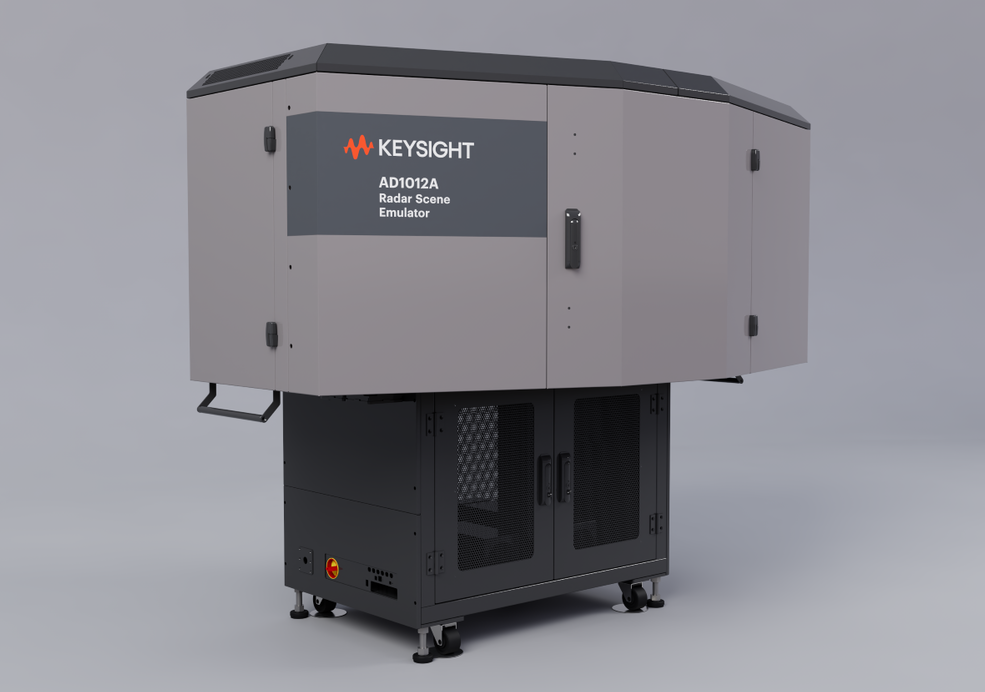ADAS simulation system from Keysight provides automotive engineers with full-scene emulation to lab test complex, real-world scenarios
Full-scene emulation in the lab is critical to developing the robust radar sensors and algorithms needed to realise advanced driver assist systems (ADAS) as well as autonomous driving (AD) capabilities. Keysight’s full-scene emulator combines hundreds of miniature radio frequency (RF) front ends into a scalable emulation screen representing up to 512 objects and distances as close as 1.5 meters.
Testing ADAS and autonomous driving algorithms and taking into account the safety issues at stake adds layers of complexity into automotive testing. Using full scene rendering that emulates near and far targets across a wide continuous field of view (FOV), Keysight’s Radar Scene Emulator enables engineers to rapidly test automotive radar sensors integrated in autonomous driving systems with highly complex multi-target scenes.
The technology shifts from an approach that is centred on object detection via target simulation to traffic scene emulation, offering automotive OEMs a number of key benefits:
Big Picture Clarity: The emulator allows radar sensors to see more with a wider, continuous FOV, eliminating the gaps in radar vision and enabling improved training of algorithms to detect and differentiate multiple objects in dense, complex scenes. As a result, decisions can be made based on the complete picture, not just what the test equipment sees.
Real-world complexity: Testing radar sensors against a limited number of targets provides an incomplete view of driving scenarios and masks the complexity of the real-world. The emulator allows OEMs to visualise real-world driving scenes in the lab with variations of traffic density, speed, distance and total number of targets.
Accelerated learning: The system provides a deterministic real-world environment for lab testing complex scenes that can currently only be tested on the road. Its test approach allows OEMs to significantly accelerate ADAS/AD algorithm learning by testing scenarios earlier with complex repeatable high-density scenes, with objects stationary or in motion and with varying environmental characteristics.
Improved scene resolution: The ability to distinguish between obstacles on the road needs to be tested for a smooth and fast transition towards higher levels of vehicle autonomy. Keysight addresses this technology gap with point clouds (multiple reflections per object), which improves resolution for each object.
According to Thomas Goetzl of Keysight, the Radar Scene Emulator offers automotive companies an approach that will bring the road to the lab through full scene rendering, “The vision of fully autonomous vehicles is rapidly approaching, and we’re thrilled to be accelerating this vision into a reality,” he says.
The Emulator is part of the company’s Autonomous Drive Emulation (ADE) platform, created through a multi-year collaboration between Keysight, IPG Automotive and Nordsys. The ADE platform exercises ADAS and AD software through the rendering of predefined use cases that apply time-synchronized inputs to the actual sensors and subsystems in a car, such as the global navigation satellite system (GNSS), vehicle to everything (V2x), camera and radar. As an open platform, ADE enables users to focus on the development and testing of ADAS/AD systems and algorithms, including sensor fusion and decision-making algorithms. The platform can integrated with commercial 3D modelling, hardware-in-the-loop (HIL) systems and existing test and simulation environments.
- UK manufacturing steps up to COVID-19 crisis - April 2, 2020
- Clustering Innovation - March 12, 2020
- A Global Monitor - March 6, 2020

